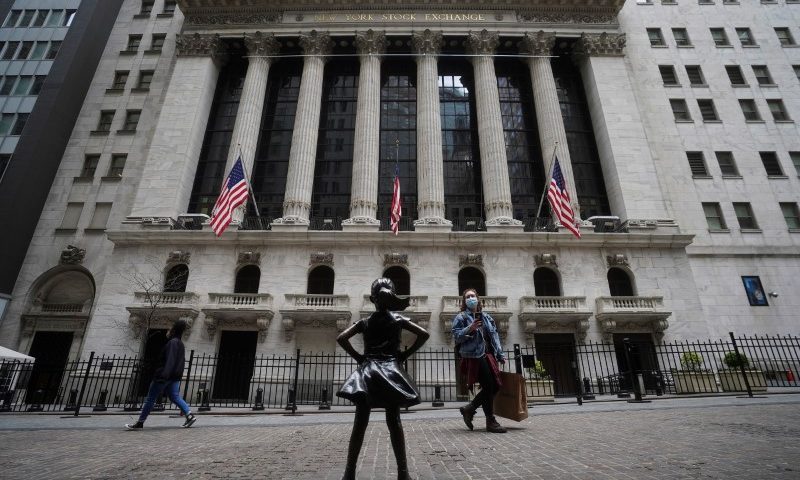Short-term Treasury yields on Tuesday extended their climb to monthly highs, but long-dated bonds were subdued, as fixed-income investors awaited the Federal Open Market Committee’s Wednesday policy update, which could provide a clearer picture of the central bank’s view on the economy and inflation outlook.
How Treasurys are performing
- The 10-year Treasury note yield TMUBMUSD10Y, 1.499% was at 1.498%, versus 1.499% on Monday at 3 p.m. Eastern Time. Yields rise as prices fall, and vice versa.
- The 30-year Treasury TMUBMUSD30Y, 2.198%, known as the long bond, was at 2.199%, up one basis point, compared with 2.189% a day ago.
- The 2-year Treasury note TMUBMUSD02Y, 0.169% was yielding 0.165%, versus 0.159% on Monday.
On Tuesday, the 2-year Treasury note hit its highest level since May 12, according to Dow Jones Market Data.
Today’s fixed-income drivers
Treasury investors have inflation on the brain but thoughts of rising pricing pressures may not recede until the conclusion of the rate-setting FOMC’s policy meeting at 2 p.m. Eastern Time Wednesday, followed by a 2:30 p.m. news conference.
On Tuesday, investors pored over a batch of data, including the May producer-price index, which rose 0.8%, pushing prices up 6.6% year over year. Separately, retail sales dropped 1.3% in May.
Meanwhile, a report on New York Fed’s Empire State business conditions index fell 6.9 points to 17.4 in June, pulling back from strong readings in the past two months, the regional Fed bank said Tuesday. Economists had expected a reading of 22.3, according to a survey by The Wall Street Journal.
Separately, the Federal Reserve said industrial production rebounded 0.8% in May due to a strong gain in auto production. The National Association of Home Builders’ monthly confidence index slipped to 81 in June from 83 in May. That’s the lowest level in nine months.
Investors also watched an auction of $24 billion in 20-year Treasurys TMUBMUSD20Y, 2.116% debt, which was described by one analysts as “one of the stronger auctions in the short history of the modern 20-year bond.” The U.S. government started issuing 20-year bonds in the first half of last year.
The reopening auction saw a 2.40 bid/cover ratio, considered near the upper end of recent auctions, with the offering stopping through 1.5 basis points from the “when issued,” indicative of strong demand. Indirect bidders, a group that includes foreign central banks, took down 62.1% of the auction, more than 4 percentage points above the recent average and the biggest takedown since October 2020, according to Jefferies.
What strategists are saying
“If we had a $1 for every time we heard a Fed member say they want to run things hot. The problem with that approach is it eventually flames out, or the analogy I’ve given, when wanting to drive 200 mph in a 55, an accident was bound to happen,” wrote Peter Boockvar, chief investment officer at Bleakley Advisory Group, in a Tuesday research note.
“Thus, this policy eventually becomes the architect of its own demise in terms of effectiveness. Well, the most interest rate sensitive part of the market, that being housing, has hit a wall and is now burning out (mortgage apps to purchase a home is at the lowest in 13 months),” he wrote.

